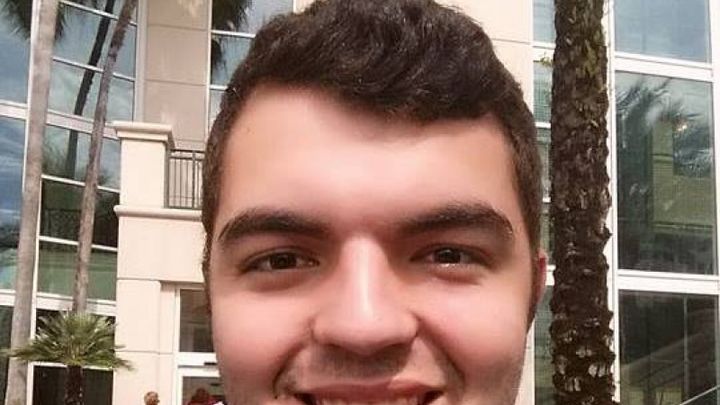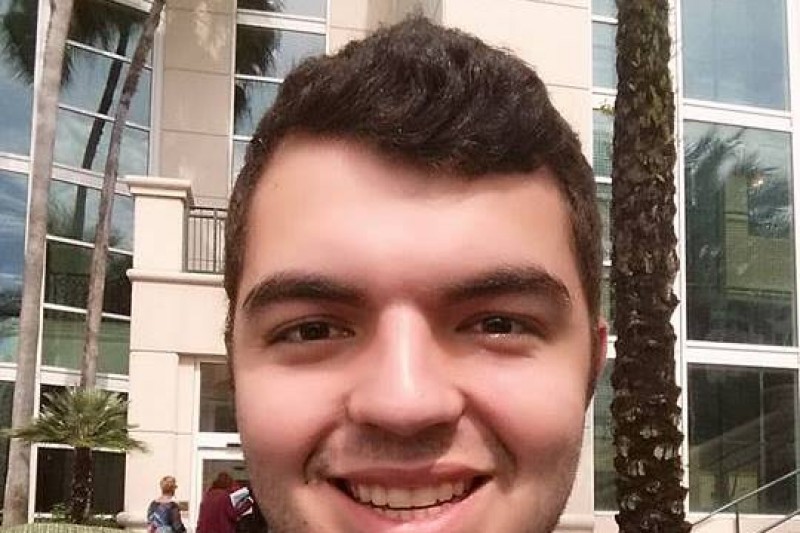
Brett's Trip to Ancient Historic UK
Donation protected
As a history major, I have long wanted to be a history professor, but assumed I would choose the practical path of becoming an attorney, as I also enjoy the practice of law. I have since discovered, however, that there exists a position that encompasses both elements of my passion: Historic Preservation & Cultural Heritage Law. Historic preservation protects more than bricks and mortar or a handful of stones. It accentuates the idea that our monuments visibly connect us with our past and provides context for the world as we see it today. “It fuses art with craftsmanship, capacity for modern utility with embodied energy, and progressive ideas for economic revitalization with traditional authenticity”[1]. I believe in the power of learning from our past, as this is what drives my desire to pursue the path of the historian. It is through an understanding of our past that we find a reflection of our present.
I understand that the field of my passion is not one that produces significant revenue, but I am a man in pursuit not of material wealth, but the intrinsic value of pursuing my passion of protecting history from the greed of modern development. Cultural heritage is the legacy of physical artifacts and intangible attributes of a society inherited from past generations, attributes that are maintained today and are dedicated to continue in future generations. Historic preservation law is intended to preserve historical and archaeological sites, and is a field little known to the public eye. This is exactly why I must provide the field more manpower, as the history of the world must be preserved so that we may understand who we are.
It is with this in mind that I have long sought an opportunity to engage with the monuments of our distant past in such a way that I can study historic preservation law as well as cultural heritage law. It should seem to me that this opportunity has arisen, at least in part. This spring, I am enrolling in Dr. Reiter’s 322H & ES410 course, The Early English Landscapes. Unlike a traditional course, one must be invited to join this adventure, as I have been as a result of a few of my personal merits. I will be travelling with a handful of students and Drs. Kimberly and Michael Reiter to Great Britain in May of 2016 in a field course designed to study the relationship between British History and the natural environment. I will be traveling across landscapes ranging from ancient moors to the Welsh mountains, studying how British culture, attitudes, and technology have impacted their heritage. For 16 days, I will explore Ireland, Wales, England, and Scotland, conducting research via hiking through legendary landscapes, scouring Neolithic ruins, studying museums, and overall witnessing thousands of years of cross-cultural history.
The anticipated cost of this course, this adventure, is $5,300. This figure includes the cost of roundtrip airfare out of Orlando, transportation while on the course, all admissions and entrance fees, accommodations at historic English inns and hotels, breakfast and dinner. Insofar, I have worked as a camp counselor at Westchase Recreation taking care of children ages 8-12 by tutoring them and playing sports with them. I have also been the History Department’s work study for this semester, helping professors manage their classes and research and updating their blackboard accounts, blackboard being the website through which professors communicate and provide course materials for their students.
One might ask, why must I go to the United Kingdom, and not something along the lines of the earlier settlements of Sumer or Egypt, and to me the answer is quite clear. The Egyptians and the Sumerians kept detailed records concerning their works, and are thus respected around the globe for their significance. Details of those sites can be easily gathered through extensive reading of the works of other historians, but the Neolithic United Kingdom provides for an entirely different initiative. Even now, the creators of the stone monuments elude us. For centuries we’ve guessed at druidic societies, the Romans, the Celts, or even extra-terrestrial interventions for the sites. The fact of the matter is, we simply do not know. Keeping this in mind, it is far more important to experience these sites firsthand, rather than relying on the speculation of other researchers. This is a path that I myself must walk. Through this adventure, I will experience cultural immersion stinging across millennia, meeting people of diverse backgrounds and most importantly, of entirely different perspectives from those of the historians I’ve read up on. This sort of experience cannot be gained remotely, this is the call of the Neolithic drawing me to discover its secret.
I’m doing what I can to meet the figure, but at this pace it will be impossible for me to reach my goal by the January deadline. As much as I detest asking for money, I fear at this juncture it is my only hope. I am willing to entertain any requests that you might have of me, and I will gladly report my progress while on the trip and throughout the semester. I humbly ask for your help in this struggle to experience, learn, and grow.
[1] Craig Potts, Executive Director of Kentucky Heritage Council and State Historic Preservation Officer
I understand that the field of my passion is not one that produces significant revenue, but I am a man in pursuit not of material wealth, but the intrinsic value of pursuing my passion of protecting history from the greed of modern development. Cultural heritage is the legacy of physical artifacts and intangible attributes of a society inherited from past generations, attributes that are maintained today and are dedicated to continue in future generations. Historic preservation law is intended to preserve historical and archaeological sites, and is a field little known to the public eye. This is exactly why I must provide the field more manpower, as the history of the world must be preserved so that we may understand who we are.
It is with this in mind that I have long sought an opportunity to engage with the monuments of our distant past in such a way that I can study historic preservation law as well as cultural heritage law. It should seem to me that this opportunity has arisen, at least in part. This spring, I am enrolling in Dr. Reiter’s 322H & ES410 course, The Early English Landscapes. Unlike a traditional course, one must be invited to join this adventure, as I have been as a result of a few of my personal merits. I will be travelling with a handful of students and Drs. Kimberly and Michael Reiter to Great Britain in May of 2016 in a field course designed to study the relationship between British History and the natural environment. I will be traveling across landscapes ranging from ancient moors to the Welsh mountains, studying how British culture, attitudes, and technology have impacted their heritage. For 16 days, I will explore Ireland, Wales, England, and Scotland, conducting research via hiking through legendary landscapes, scouring Neolithic ruins, studying museums, and overall witnessing thousands of years of cross-cultural history.
The anticipated cost of this course, this adventure, is $5,300. This figure includes the cost of roundtrip airfare out of Orlando, transportation while on the course, all admissions and entrance fees, accommodations at historic English inns and hotels, breakfast and dinner. Insofar, I have worked as a camp counselor at Westchase Recreation taking care of children ages 8-12 by tutoring them and playing sports with them. I have also been the History Department’s work study for this semester, helping professors manage their classes and research and updating their blackboard accounts, blackboard being the website through which professors communicate and provide course materials for their students.
One might ask, why must I go to the United Kingdom, and not something along the lines of the earlier settlements of Sumer or Egypt, and to me the answer is quite clear. The Egyptians and the Sumerians kept detailed records concerning their works, and are thus respected around the globe for their significance. Details of those sites can be easily gathered through extensive reading of the works of other historians, but the Neolithic United Kingdom provides for an entirely different initiative. Even now, the creators of the stone monuments elude us. For centuries we’ve guessed at druidic societies, the Romans, the Celts, or even extra-terrestrial interventions for the sites. The fact of the matter is, we simply do not know. Keeping this in mind, it is far more important to experience these sites firsthand, rather than relying on the speculation of other researchers. This is a path that I myself must walk. Through this adventure, I will experience cultural immersion stinging across millennia, meeting people of diverse backgrounds and most importantly, of entirely different perspectives from those of the historians I’ve read up on. This sort of experience cannot be gained remotely, this is the call of the Neolithic drawing me to discover its secret.
I’m doing what I can to meet the figure, but at this pace it will be impossible for me to reach my goal by the January deadline. As much as I detest asking for money, I fear at this juncture it is my only hope. I am willing to entertain any requests that you might have of me, and I will gladly report my progress while on the trip and throughout the semester. I humbly ask for your help in this struggle to experience, learn, and grow.
[1] Craig Potts, Executive Director of Kentucky Heritage Council and State Historic Preservation Officer

Organizer
Brett Whitmore
Organizer
Tampa, FL